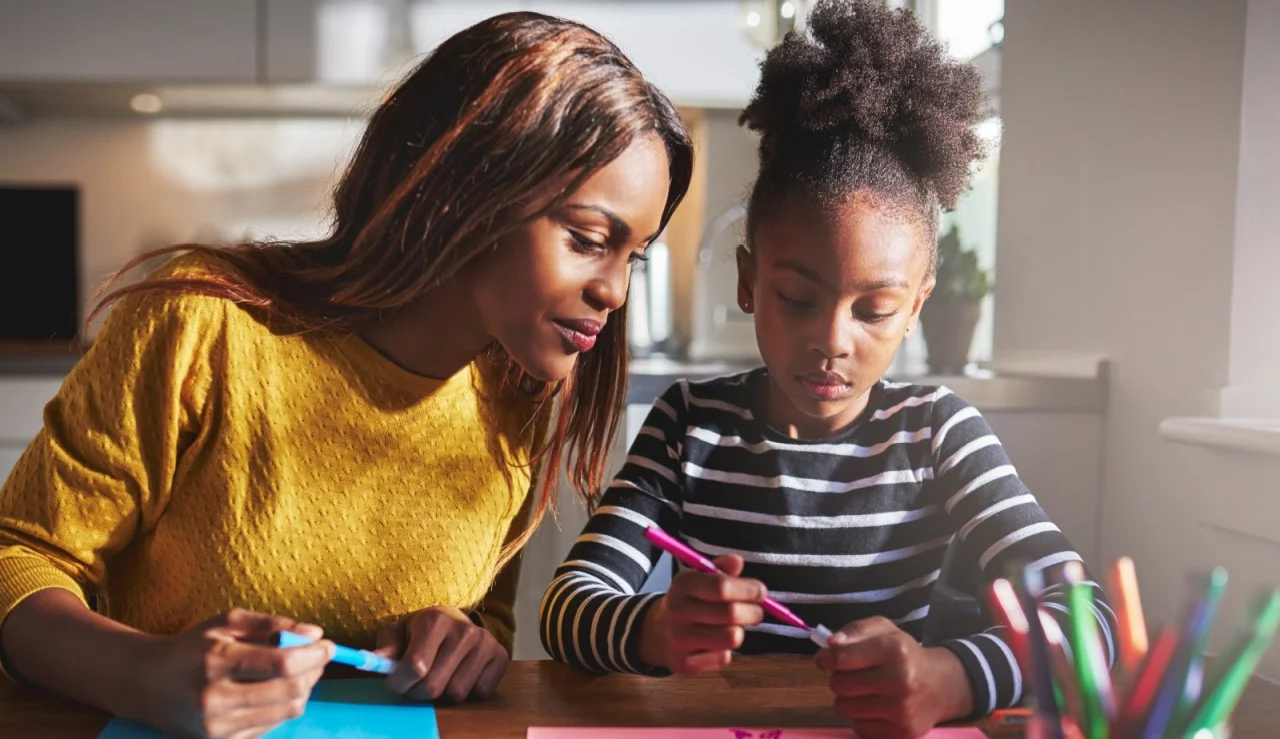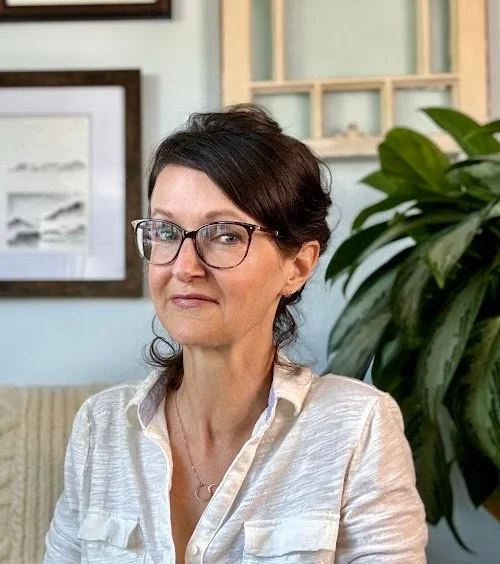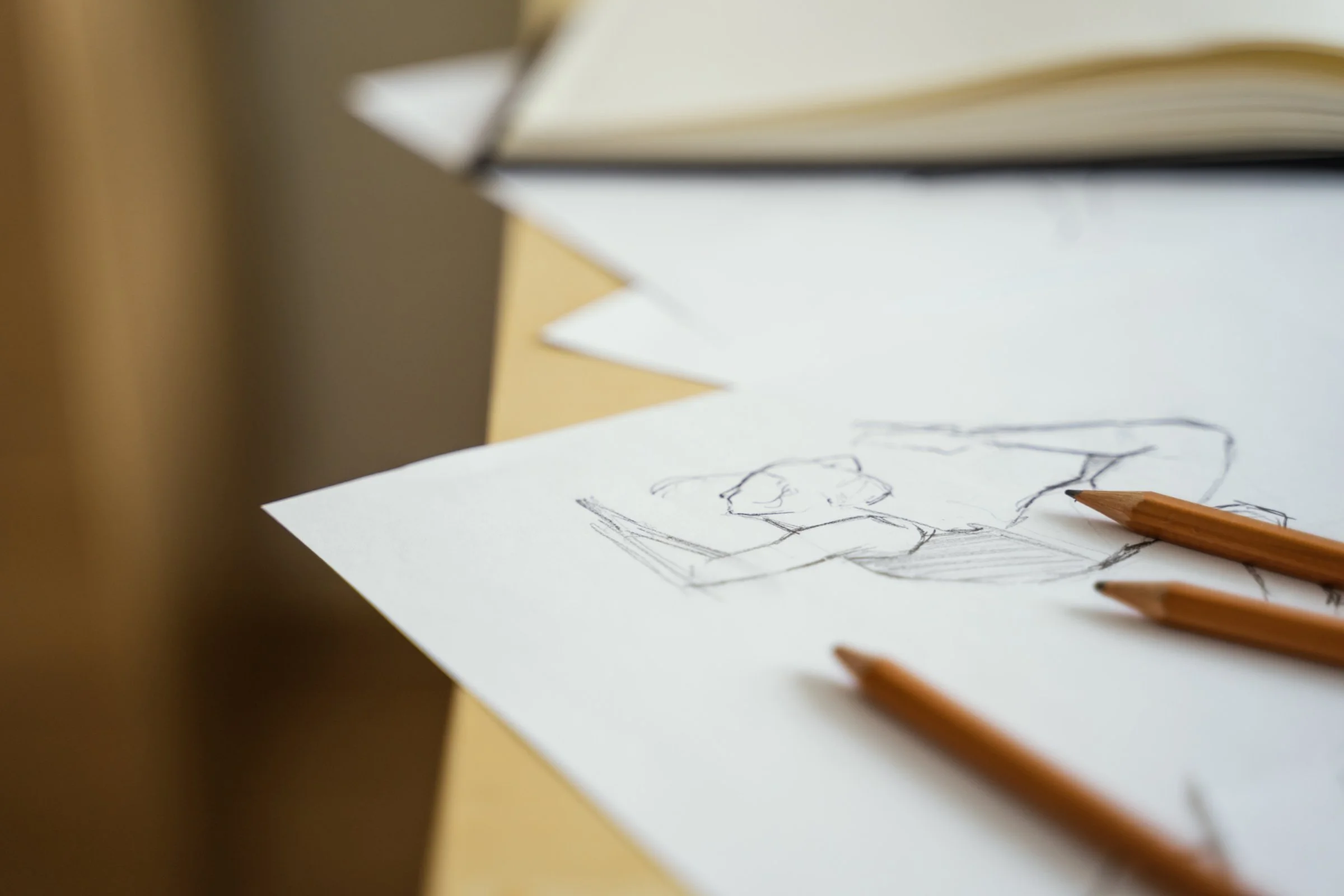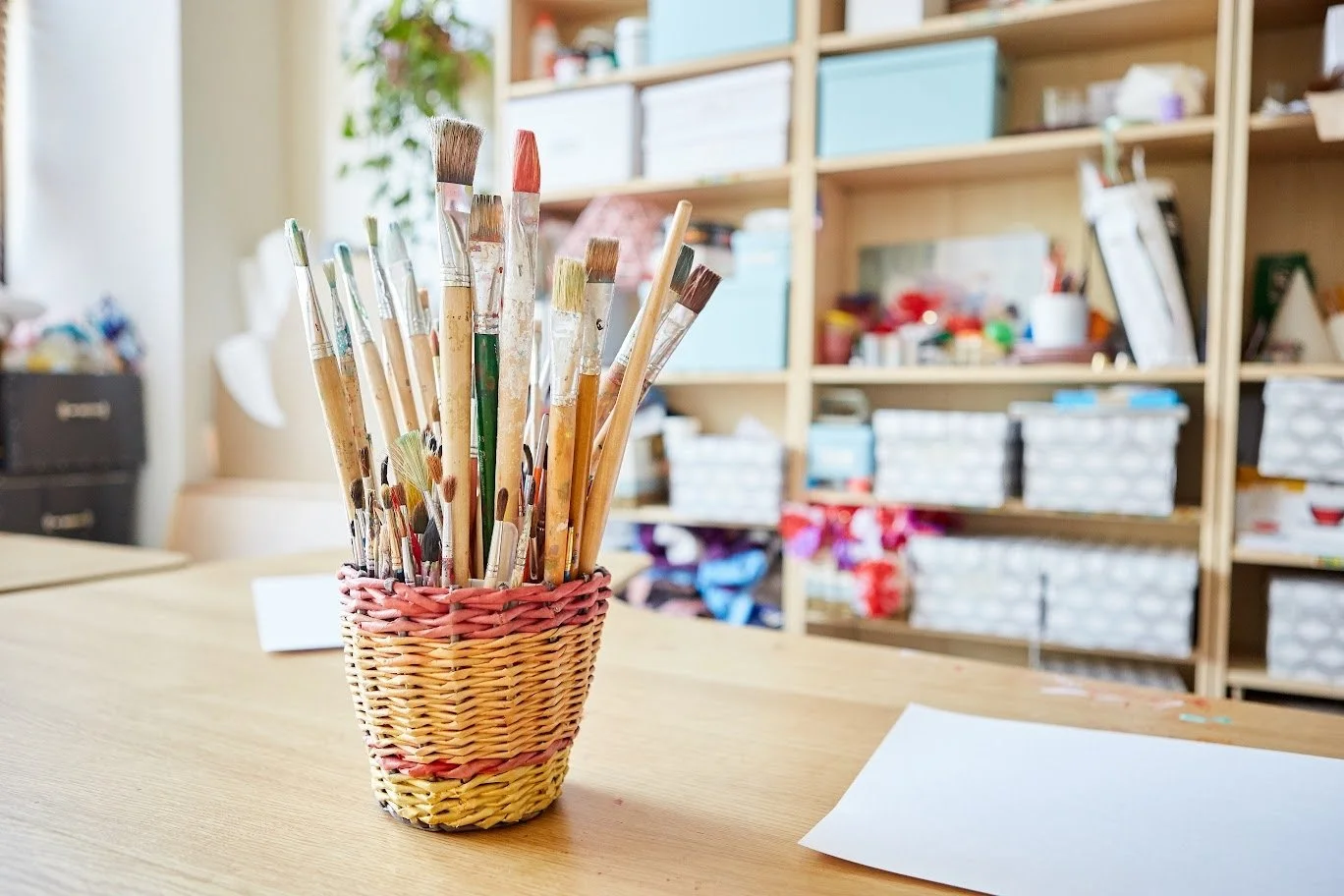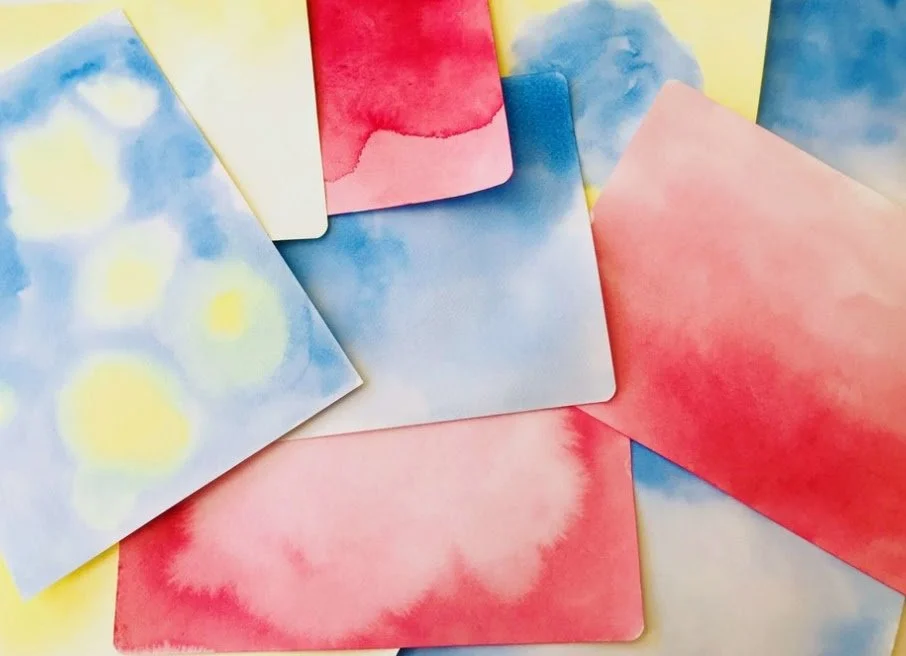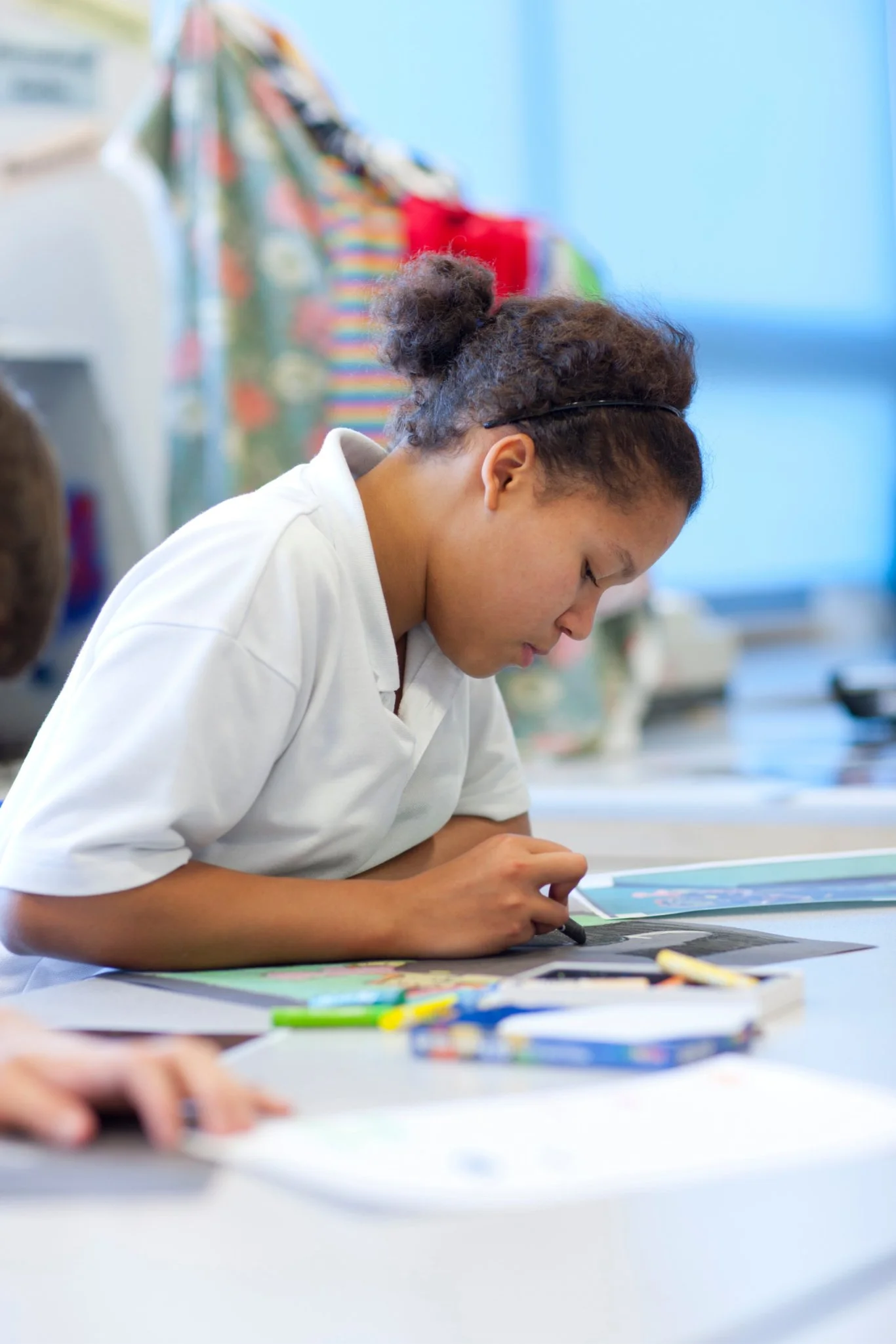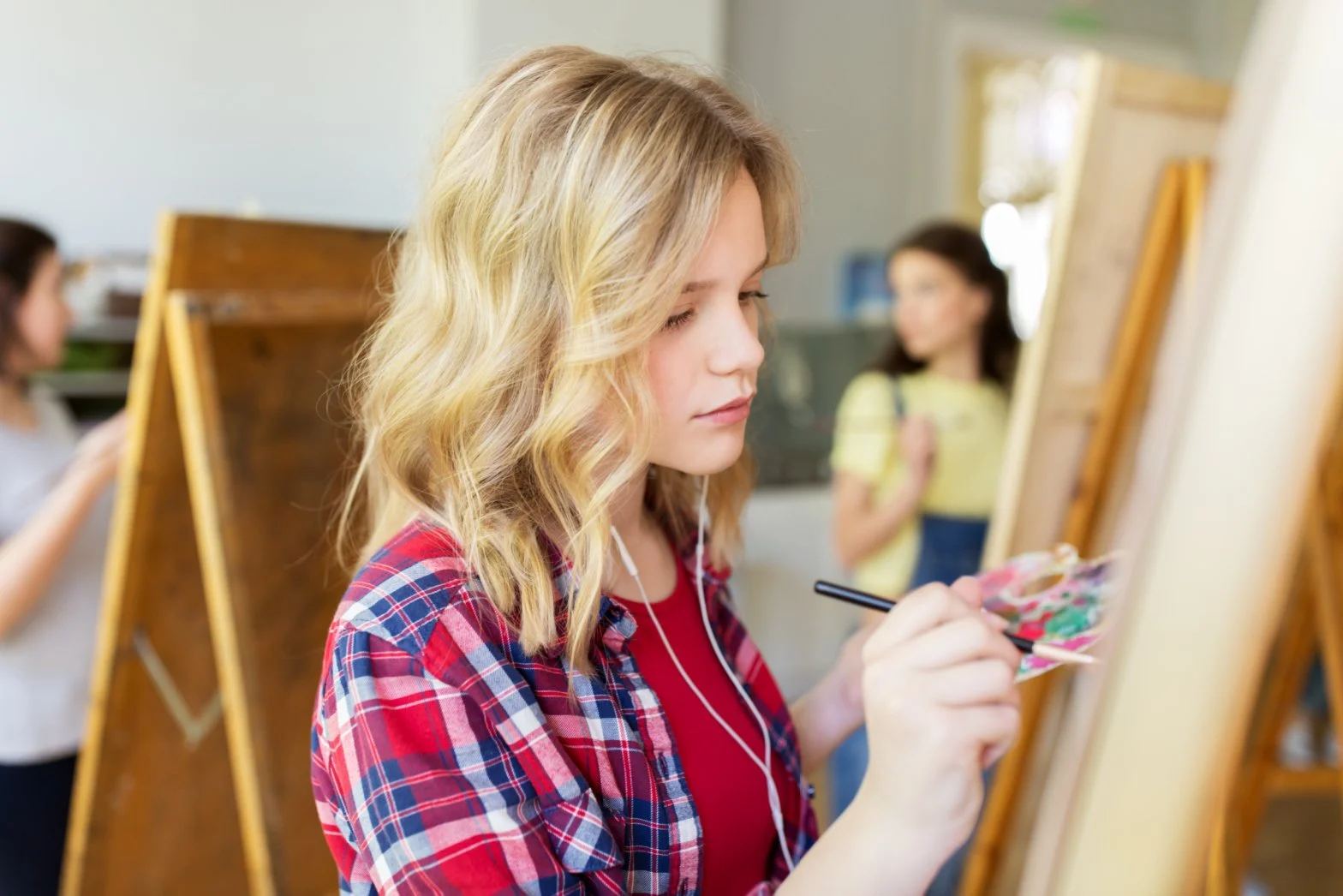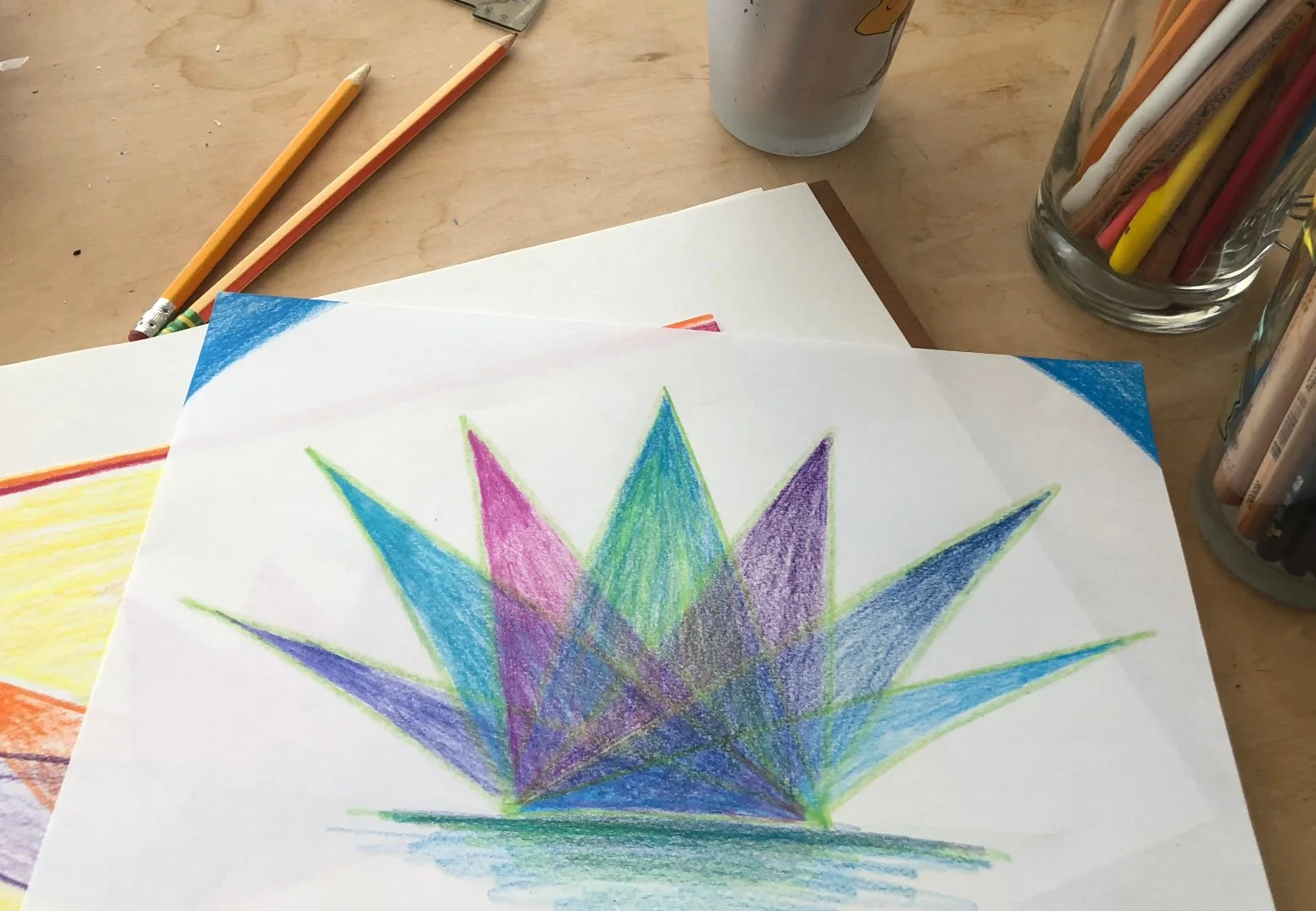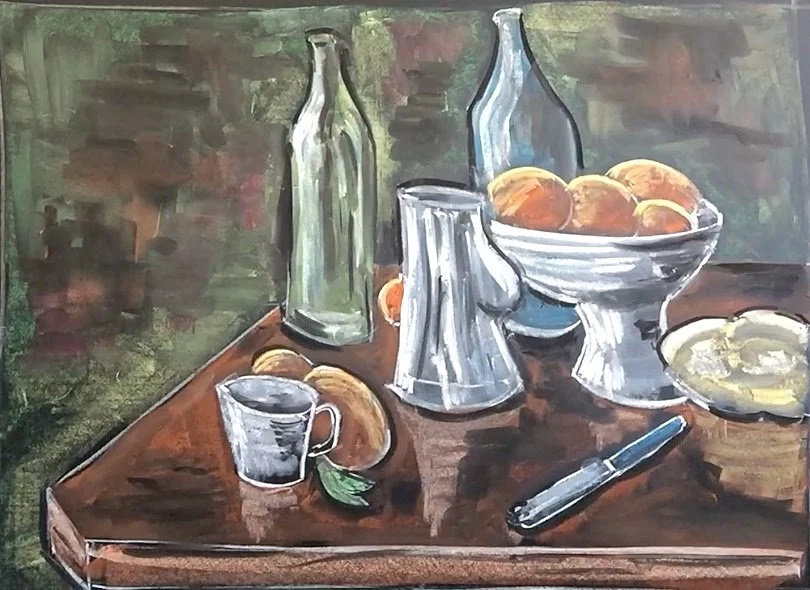
Waldorfish Blog
The Beauty of a Slow Start to the School Year
The new school year is an exciting, and sometimes overwhelming, time of year.
The Beauty of a Slow Start
When we think of the “first day of school,” many of us picture sharpened pencils, crisp notebooks, and a flurry of lessons and activities packed into the schedule. It’s exciting!
But if we’re honest, it can also feel a bit like going from lounging in a hammock to suddenly running a marathon - without so much as a stretch in between.
And that’s not just true for our children. As parents, we feel the weight of this seasonal shift too. Our kids are learning to release the rhythms of summer while stepping into new ones, and at the same time, we’re holding the invisible threads - schedules, meals, moods, energy levels - while also trying to find our own rhythm again. It’s a lot. It’s hard. And, you’re not doing anything wrong.
That’s why I’ve always loved the idea of a slow start to the school year. Rather than jumping straight into a full load of lessons and activities on day one, we give ourselves (and our children) space to ease in. This approach isn’t just kinder to everyone’s nerves - it also happens to align beautifully with both Waldorf rhythms and modern science.
How can you make your daily routine a bit more gentle?
Why Gentle Transitions Support the Nervous System
Transitions are tricky. Even happy changes -like beginning a new grade - ask our nervous systems to adjust. When we add too many changes at once, children (and parents!) can slip into “fight or flight” mode, which is not exactly the best state for joyful learning.
By starting slowly - adding one or two elements at a time - we give the nervous system a chance to stay regulated. Children feel secure, parents feel less frazzled, and the household atmosphere stays more harmonious. (And let’s be honest: fewer meltdowns are always a win.)
Research tells us that habits stick best when introduced gradually. Instead of overhauling everything on One Big Monday Morning, layering in small changes helps new rhythms take root.
A Waldorf Perspective on Rhythm
In Waldorf education, rhythm is central. Breathing in and breathing out, balancing activity with rest, honoring the flow of the seasons - all of this creates a sense of steadiness for children.
Taking time to transition is healthy for the whole family.
A slow start to the school year mirrors this wisdom. We don’t need to hit the gas right away. Instead, we can begin with simple songs, a morning walk, or a story to set the tone. Lessons and projects can be layered in gradually, like brushstrokes in a painting.
And just as autumn ripens slowly, the festival of Michaelmas at the end of September often feels like a natural settling point. By then, many families discover that their rhythm has gently rooted itself - just in time to celebrate courage and strength in the turning of the year.
Practical Tips for a Slow Start
Here are a few ideas to make this approach simple and doable:
Week 1: Focus on rhythm. Establish your morning circle, enjoy stories, and reconnect with your learning space. Keep lessons light and playful.
Week 2: Add one main lesson subject or block. Keep afternoons simple with nature walks, handwork, or drawing.
Week 3: Gradually layer in more lessons/activities, while keeping an eye on how everyone is adjusting. Flexibility is your friend.
Week 4: Notice how much you’ve already established without the stress of a “big bang” start. Celebrate progress - and maybe bake some bread while you’re at it (bonus points if it’s dragon-shaped for Michaelmas ;)
Parents Benefit Too
We often talk about children’s needs, but parents also have nervous systems that crave gentleness. A slow start gives us space to shift gears - because honestly, the end-of-summer transition can feel bumpy no matter how long we’ve been at this. Easing into the year reduces stress and helps us sustain energy for the long haul. And it reminds our children, by example, that growing into new rhythms is something we all do together, one step at a time.
Slowing down builds a strong foundation- you’ve got this!
A Final Word of Encouragement
If you’re worried that a slow start might end up feeling like you’re “behind” in some way - let me reassure you: you’re not. You’re actually laying a stronger foundation for the months to come. The school year is long, and what matters most is creating rhythms that nourish your family rather than drain it.
This seasonal transition is challenging for everyone - kids and parents alike - but just as we’ve done in other times of change, we’ll gradually settle into steadier days and familiar rhythms.
So this September, consider giving yourself permission to slow down. Notice how the seasonal shift happens little by little, not all at once. Your homeschool year can unfold the same way - with steadiness, warmth, and maybe even a little more joy.
(And if anyone asks why you’re taking things slowly, just smile and say you’re giving your family the gift of nervous system regulation. That’ll either impress them… or end the conversation quickly. Win-win ;)
About the Author
Robyn Beaufoy is Waldorfish’s CEO, and a course instructor for some of our courses - Waldorf Art for Beginners, Weekly Art Foundations, and Simple Season. You’ll find her intuitive touches and influences throughout everything Waldorfish offers! Robyn has been in the world of education for over 25 years, with an MA in Education and a certification in Waldorf teaching - she also homeschooled both of her children. In 2012 Robyn co-founded Waldorfish.com, creating it with the vision of making Waldorf inspired-art and pedagogy more accessible, joyful, and doable for homeschoolers all over the world.
The Quiet Power of a Weekly Art Rhythm
Where can you find a place for art in the rhythm of your home life?
In the busyness of homeschooling life, it’s easy to feel like we’re constantly moving - navigating lessons, meals, dishes, and the emotional weather of a growing family.
Amid all that motion, creating (and returning to) a weekly rhythm that includes art can feel like a gentle anchor.
This rhythm doesn’t have to be elaborate. It doesn’t require hours of free time or a perfectly tidy table. It’s about carving out a small space, once a week, for quiet creativity. A simple drawing session, a watercolor moment, a bit of modeling with beeswax or clay. These moments aren’t “extra.” They’re essential. (And, if your rhythm is sometimes more of a gentle intention than a fixed schedule, that’s okay too. Even coming back to art ‘when you can’ has power.)
Engaging with art has many benefits for the whole family.
When art is woven into our weekly rhythm, it becomes more than just another subject to check off the list.
It becomes a shared moment of stillness. A way to regulate together. The repetition alone - of knowing art will come again next week - offers calm. It trains us (and our children) to expect beauty, to make space for process, and to feel safe in the creative unknown.
Over time, this rhythm builds a quiet kind of confidence. We learn to show up, even when we’re tired or distracted. And our children see us doing that - not perfectly, but consistently. They learn that creativity isn’t reserved for artists or experts. It’s something humans do - week after week, rain or shine.
Taking time to reconnect through art.
In that rhythm, we reconnect with each other. With the moment. And perhaps most importantly, with ourselves.
So if you’re looking for a way to ease the pace, to nourish the atmosphere of your homeschool, or simply to feel more grounded, consider this: a little art, once a week. No pressure. Just presence.
And let that be enough.
If you’d like some support creating your own weekly art rhythm, reach out and/or take a look at our Weekly Art Foundations course.
About the Author
Robyn Beaufoy is Waldorfish’s CEO, and a course instructor for some of our courses - Waldorf Art for Beginners, Weekly Art Foundations, and Simple Season. You’ll find her intuitive touches and influences throughout everything Waldorfish offers! Robyn has been in the world of education for over 25 years, with an MA in Education and a certification in Waldorf teaching - she also homeschooled both of her children. In 2012 Robyn co-founded Waldorfish.com, creating it with the vision of making Waldorf inspired-art and pedagogy more accessible, joyful, and doable for homeschoolers all over the world.
Why Art Is at the Heart of Waldorf Education (Even If You Don’t Feel Like an Artist)
If you’re new to Waldorf education, one of the first things you’ll probably notice is how art-full it is.
In Waldorf Education, art is everywhere!
From watercolor painting and crayon drawings to beeswax modeling and form drawing, it’s everywhere. And if you're anything like many of us, that might feel a little... intimidating. Maybe even a little frustrating. (“But I’m not an artist!” Sound familiar?)
But here’s the beautiful part: Rudolf Steiner, the founder of Waldorf education, didn’t put art into the curriculum to turn children into professional artists. He placed it there because he knew something essential - art builds the muscles needed for learning.
Let’s pause there for a second.
We tend to think of learning as something that happens in the mind. Reading, writing, memorizing facts and dates. But Steiner understood that learning is actually a full-body, full-being process. When children engage with artistic activity - whether it’s singing, painting, or sculpting - they’re not just being “creative.” They’re developing capacities that form the foundation for academic learning: concentration, perseverance, observation, fine motor skills, and a deepened connection to beauty and meaning.
In other words, art in the Waldorf curriculum isn’t extra. It is the curriculum.
Steiner often said that the arts awaken the “will” - that inner spark that allows a child to want to learn, to push through challenge, and to care about what they’re doing. He knew that when a child draws a picture of a story they’ve just heard, or moves their body through a geometric form, they’re not just decorating their lesson, they’re embodying it. That kind of learning sticks. It sinks in at a level far deeper than rote memorization ever could.
Take a deep breath, and get started!
So if you're feeling nervous about bringing art into your homeschooling rhythm, take heart: it's not about doing it perfectly. It's about showing up with curiosity and openness. It's about trusting the process - just like we hope our children will do.
You don’t have to be an expert artist. You just need to be willing to pick up the crayon, the brush, the modeling wax... and begin.
Because art isn’t just a “subject” in Waldorf education. It’s the vehicle for learning. And in the long run, it nurtures not only academic understanding, but also imagination, resilience, and joy.
And that? That’s worth a little mess on the table!
If you’d like some support creating your own weekly art rhythm, reach out and/or take a look at our Weekly Art Foundations course.
Robyn Beaufoy is Waldorfish’s CEO, and also a course instructor for Simple Season, Waldorf Art for Beginners, and Weekly Art Foundations. You’ll find her intuitive touches and influences throughout everything Waldorfish offers. Robyn has been in the world of education for over 25 years, with an MA in Education and a certification in Waldorf teaching - she also homeschooled both of her children for some of that time. In 2012 Robyn co-founded Waldorfish.com, creating it with the vision of making Waldorf inspired-art and pedagogy more accessible, joyful, and doable for homeschoolers all over the world.
More from Waldorfish…
Learning through Recreating: What studying great artists has to teach us.
An important aspect of middle school art curriculum in Waldorf Education is providing opportunities for students to find their own artistic style.
A Matisse-inspired still life chalk drawing from our Weekly Art Foundations course.
One of the best ways to do this? Recreate the works of great artists from the past!
We realize this may sound counterintuitive; how can copying artwork from another artist help a middle schooler find their own style - isn’t it stifling their creativity?
In Waldorf education, the practice of studying and emulating master artists aligns beautifully with its holistic, experiential approach to learning. Learning through imitation lays a strong foundation for creative expression!
The imitation is not about rigid replication but about deeply experiencing artistic techniques, composition, and color in a hands-on way.
Just as a young musician learns by playing classical pieces before composing their own music, young artists build confidence and skill by studying the masters.
Just as so much of the Waldorf curriculum does in 7th grade, we take our cues from the artists of the Renaissance. When the artistic world was expanding quickly and household names such as Leonardo di Vinci, Michelangelo and Raphael were in their creative primes, one of the ways hopeful apprentices learned was to recreate the style, technique and subjects of these (and other) artists. This method aligns with the Waldorf developmental principle that learning is most effective when it is embodied and experienced.
Through the process of copying entire great works of art or specific techniques individually, students learn foundational skills required to create a beautiful and complete piece.
A chalk drawing inspired by Monet’s “Water Lilies” series, from our Weekly Art Foundations course.
From setting the base, finding the most pleasing composition, and mixing colors, studying the masters serves as a stepping stone to personal artistic expression.
As we have discovered again and again, a strong foundation provides the confidence and ability to branch out and find one’s own style; copying masterworks isn’t just about technique—it engages the hands, heart, and mind.
Waldorf education seeks to cultivate the whole child, and working with master artists' techniques allows students to feel the art, not just analyze it.
Recreating an artist’s work is the epitome of learning through doing, which is what Waldorf education is all about!
In our art courses, we include various lessons that do just this: take a well-known artist’s work and techniques, and recreate them. From Claude Monet to Alma Thomas, Vincent van Gogh, to figure drawing as Michaelangelo once did, our courses draw on inspiration from great artists of the past and awaken our students’ own creative forces in a deeply meaningful way.
About the Authors
Robyn Beaufoy is Waldorfish’s CEO, and also a course instructor for Simple Season, Waldorf Art for Beginners, and Weekly Art Foundations. You’ll find her intuitive touches and influences throughout everything Waldorfish offers. Robyn has been in the world of education for over 25 years, with an MA in Education and a certification in Waldorf teaching - she also homeschooled both of her children for some of that time. In 2012 Robyn co-founded Waldorfish.com, creating it with the vision of making Waldorf inspired-art and pedagogy more accessible, joyful, and doable for homeschoolers all over the world.
Caitlin Amajor is Waldorfish’s course instructor for Geometry grades 5 & 6, and Botany, as well as our Administrative Assistant. From a young age, Caitlin has been immersed in Waldorf education, attending a Waldorf school from K-8. After receiving a BA in History, Caitlin gained her certification in Waldorf teaching, and spent seven years as a Waldorf class teacher in the upper grades. With a special fondness for watercolor painting and geometry, Caitlin loves bringing Waldorf education to her students all over the world, and seeing their own individuality and style bloom from the curriculum!
More from Waldorfish!
Looking for something?
Welcome to Waldorfish! We started this adventure in 2012 out of a desire to make Waldorf training more accessible to class teachers in remote locations and to homeschooling families everywhere! Read more, click here.
WE WON! Our Weekly Art courses were voted “best interactive art program.” Learn more about the award, here.
A few of our most popular blog posts:








